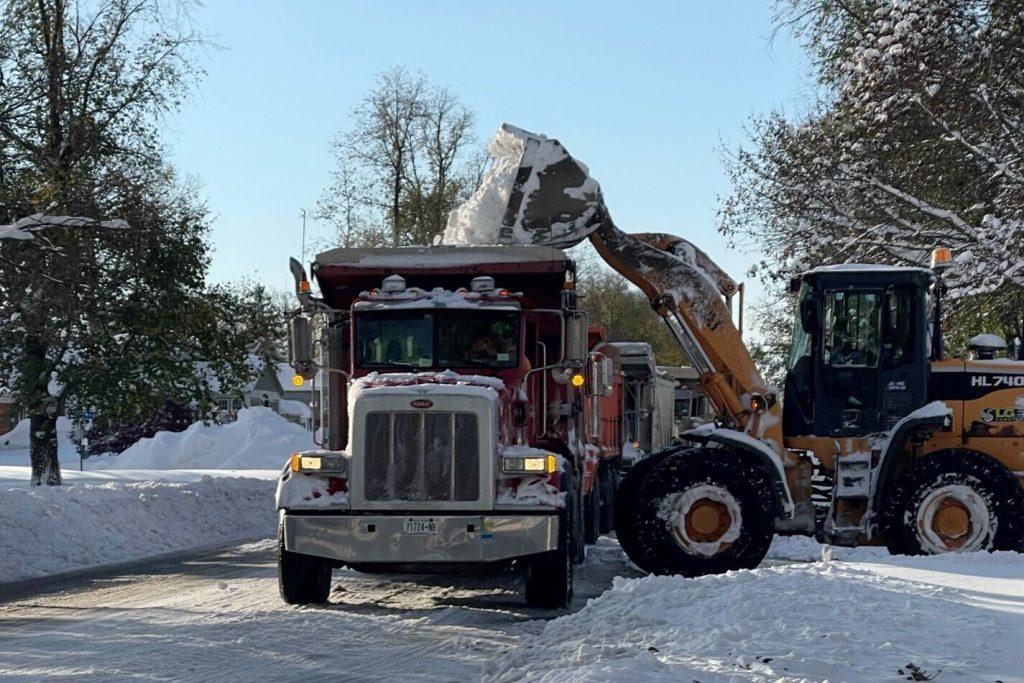Heavy snowfall is forecasted to blanket the Great Lakes region this week, triggering lake-effect snow warnings across New York, Ohio, and Pennsylvania. The National Weather Service (NWS) has issued multiple warnings, highlighting the dangers of driving under these conditions, which are particularly hazardous during this time of year. Lake-effect snow, a frequent occurrence in fall and winter in this region, arises when frigid air from Canada moves over the relatively warmer waters of the Great Lakes. This process causes moisture from the lake to be absorbed by the cold air, leading to the formation of clouds that can produce intense snowfall, often accumulating 2 to 3 inches per hour or even more. Drivers are advised to consider postponing travel plans, and in case travel is necessary, they should prepare by keeping essentials such as food, water, and a flashlight in their vehicles.
In New York, lake-effect snow warnings are currently in effect across Chautauqua and Cattaraugus Counties, with forecasts predicting snow accumulations between 12 to 24 inches until 7 p.m. on December 3. Areas like Jamestown and Olean are particularly affected, where deep snow accumulation and reduced visibility, at times falling below a quarter-mile, are anticipated to significantly disrupt travel. In southern Erie and Oswego Counties, warnings have been issued until 7 p.m. on December 2, where whiteout conditions will pose additional hazards. The NWS strongly advises drivers against traveling during these conditions, and those who must travel should equip their cars with storm kits containing essential items like shovel, tire chains, and a flashlight.
The impact of the snowy weather is being felt in Ohio as well. Lake-effect snow warnings are active in Erie County, anticipating between 10 to 20 inches of accumulation in the northern regions and even more—12 to 24 inches—in the south. Commuters can expect significant challenges on Monday due to slick and hazardous road conditions, especially on bridges and overpasses. Meanwhile, Ashtabula and Lake Counties are under warnings until 7 a.m. on Tuesday, with projections indicating continued heavy snow. While snowfall rates may be less severe than in previous days, the heaviest bands are still expected to produce snowfall at rates of 1 inch per hour. Furthermore, counties like Cuyahoga, Geauga, and Crawford also face similar warnings, with state officials urging drivers in these areas to avoid unnecessary travel and comply with any travel restrictions.
In Pennsylvania, the threat of heavy snow has led to lake-effect snow warnings for Warren and McKean Counties, which will remain in effect until 7 p.m. on Tuesday. The NWS anticipates that travel in these regions will become “very difficult to impossible.” The Monday commutes in particular are expected to be adversely affected by the extreme weather. Snow accumulations in McKean County are expected to range from 2 to 8 inches, while Warren County could see between 4 to 10 inches. There is a notable concern in both counties that areas north of Route 6 may receive over a foot of snow, compounding the difficulties for travelers.
Safety precautions are being emphasized across all states affected by the incoming snow. The NWS has reiterated that delayed travel is the best option as conditions will continue to worsen. For individuals who must travel, carrying an emergency kit is crucial. The kits should not only include food, water, and a flashlight but also necessities like a shovel, booster cables, and tire chains, which can be lifesaving in the event of a breakdown or unexpected situation during the storm. Weather officials are stressing the unpredictability of lake-effect snow, which can create extremely localized and intense conditions, making caution and preparedness vital during this time.
As the week progresses, the Great Lakes region will need to closely monitor updates from the NWS regarding changing weather patterns and additional warnings. Communities will have to adapt to the challenges posed by the snow, which could affect transportation, local businesses, and public safety. Residents are encouraged to remain informed of the latest forecasts and heed any warnings or advice from local authorities regarding travel and safety measures. With the predicted snowfall, the region is bracing for a significant winter weather event, the consequences of which may linger even after the storm has passed, affecting road conditions and recovery efforts in the days that follow.










